|
MahaShivratri – the festival of auspiciousness
This universe is not eternal. It is created; it is sustained for a certain period and it is destroyed to be recreated. The fact remains, everything in this universe is mortal. Modern physicists have also proved that the whole creation comes out of nothing and will go into nothingness. Widespread emptiness is the basis of existence and the fundamental property of the universe. ... This vast emptiness is what we call Shiva. The celebration and remembrance of Shiva is done on Mahashivratri. Mahashivratri is one of the major festivals in Hinduism, and this festival is solemn and marks a remembrance of "overcoming darkness and ignorance" in life and the world. Scientific relevance: Astrologically, the gravitational pull of the Moon is maximum on the new Moon and full moon day, resulting in the rise of full body fluid in an upward direction towards the brain. Maha Shivaratri is celebrated on 14th day/chaturdashi of Krishna paksha of magha month. Around Maha Shivaratri, the Sun and the Moon are aligned in such a way that the Vata component of our body gets activated. The activity is maximum during this time of the year. As per Ayurveda, Vata is one of the three constituents of the body, the other two being Pitta and Kapha. Anything related to movement in the body has a direct connection with Vata. Vata directly impacts the following –
Medically, the night of Shivaratri is the best time for us to balance the Vata in ourselves. As Yogis, we identify 5 types of Vata - Prana Vata (responsible for inhalation), Apana Vata (responsible for removal of waste), Udana Vata (responsible for exhalation), Samana Vata (responsible for consolidation) and Vyana Vata (responsible for locomotion). If one performs the Vata Kriya during the week of Maha Shivaratri, or at least on that one day, all the above Vatas as cleansed and lubricated. A person with a balanced and cleanses Vata will exhibit a positive behaviour and extrovert, happy, clam and have presence of mind. Fasting on Maha Shivaratri make you more stable to combat with the effect of moon (religiously/ and scientifically as it is said that moon much like sea effects state of mind). When celebrated: Maha Shivratri is one of the most auspicious Hindu festivals celebrated in honour of Lord Shiva. It falls on the Chaturdashi Tithi during Krishna Paksha. While Shivratri occurs every month, Mahashivratri is the great night of Shiva that occurs only once a year in the month of Magha. How Celebrated:
Why Celebrated – Spiritual Significance: Different legends describe the significance of Maha Shivaratri. According to one legend, this is the night when Shiva performs the heavenly dance of creation, preservation and destruction. The chanting of hymns, the reading of Shiva scriptures and the chorus of devotees joins this cosmic dance and remembers Shiva's presence everywhere. According to another legend, this is the night when Shiva and Parvati got married. A different legend states the offering to Shiva icons such as the Linga is an annual occasion to get over past sins if any, to restart on a virtuous path and thereby reach Mount Kailasha and liberation. Shiva Purana, chapter 6 has explained the creation of universe. Brahma ji explained to sages that at the ti me of Great Dissolution, all the mobile and immobile objects of the world were dissolved and no celestial body existed. No demarcation of the day and the night existed. There was no fire, no wind, no earth and no water. There was no unmanifest primordial being. The whole firmament was one complete void. The manifest form of the formless Being is Shiva. Isvara then created the physical form Shakti from his body. This Shakti is called by various names - Pradhana, Prakriti, Maya, Guṇavati, Para. Shakti is the mother of Buddhi Tattva (The cosmic Intelligence), the mother of material world. In Vidhyeshwara Samhita (First Samhita) of Shiva Purana, it is mentioned that in the first cosmic cycle (kalpa) Shiva assumed huge column of fire to decide the superiority between Brahma ji and Vishnu ji. But neither of two could find the upper or lower end of the huge column. Finally, Shiv ji came out of the column of fire and took visible form and declared, “O dear Vishnu, I am pleased with you, as you strictly adhered to the truth in spite of your desire to be supreme. Hence among the general public you will have footing equal to mine. You will be honoured likewise. Hereafter, you will have separate from me having separate temple, installation of idols, festivals and worship.” Brahma and Vishnu, both adored Shankara. Shiv Ji said, “he is delighted with the worship on this holy day. Henceforth this day will be famous as Shivratri. He who performs the worship of my phallic emblem and embodied image on this day will be competent to perform the task of creation and maintenance. The devotees who will observe fast on Shivratri during day and night, he shall restrain sense organs. He shall adore to the extent of his strength. He shall not deceive anyone. Fasting, worship of phallic emblem and festivities on the day bring ample results including liberation.” Those with worldly ambitions see that day as the day Shiva conquered all his enemies.
0 Comments
Hindu festivals nurture the personal bonding among different members of the joint family. Unlike mechanical western system of designating one day for a particular relation of the family member, Hindu festivals have religious, spiritual, social and economic importance. They have a very strong foundation which enhances the bonding of the relations. Western countries have designated different dates for different relations – Baby Day (May 2nd), Brother & sister day (May 2nd), Parents day (as per UNO - June 1), Father Day (various dates), Mother Day (various dates), Brother Day (May 24th), Sisters Day (first Sunday of August), Son & daughter day (August 11th), Children Day (November 20th), Husband appreciation day (third Saturday of April), Wife appreciation day (third Sunday of September), Grandparents Day (various dates), Family Day (May 15th), Father-in-Law Day (July 30th), Mother-in-Law Day (fourth Sunday of October), Son-in-Law Day (April 10th), Aunt & Uncle Day, Cousins Day (July 24th), Daughter-in-Law Day, etc. Every Hindu festival celebration centre around the rituals of prayer, fasting and seeking of blessings, and involves the decoration of homes, wearing of new clothes, music, dancing, and feasting. Hindu Festivals are many and celebrated for different relations. Under the influence of western culture, Hindus are gradually forgetting or ignoring the celebration of these festivals. The purpose of this article is to remind about the rich Hindu culture and festivals.
Tulsi Marriage festival is celebrated on Ekadashi of Shukla Paksha of Kartika month (November-December). On this day, marriage of Tulsi plant with Shaligram is performed. By worshipping them, Lord Vishnu and Lakshmi ji are made happy and this increases prosperity and happiness at home.
Vat Savitri fast is famous by the name of Vat Savitri due to the ritual of worshiping the Vat tree and remembering the story of Savitri-Satyavan. Worshiping the banyan tree for the longevity of the husband became a part of this fast. Women perform fast-worship along with Katha Karma and wrap threads of cotton around the Vat tree during the circumambulation. It is considered to give good luck and help in the attainment of children. There are different opinions regarding the date of this fast. According to Skanda Purana and Bhavishyottara Purana, there is a law to observe this fast on the full moon day of Shukla Paksha of Jyeshtha month, while according to Niyasamrit etc., it has been said to fast on Amavasya of Jyeshtha month.
Ahoi Ashtami fast is celebrated on the eighth day of Kartik Krishna Paksha (November-December). Mothers keep fast throughout the day for the long life and happy life of their son. During the fasting of Ahoi Ashtami, Hoi is worshiped when the stars are visible in the evening. Arghya is also offered to the stars. This hoi is made on the wall or it is hung on the wall at the time of worship after wrapping hoi on a thick cloth. Should we forget that our ancestors who have endowed us with name, fame, wealth, family business, and heritage? No. Pitra Paksha is the occasion to pay respect and repay the debt of our departed parents, grandparents and great grandparents. Hinduism or Snatana Dharma has festivals not only to celebrate different family relationships, but to also pay reverence to the ancestors after death. The dedicated period during which Hindus remember their ancestors is called Pitra Paksha. During Pitra Paksha, the rites performed are called as Shraaddha or Tarpan, to seek blessings of ancestors. It is time to remember the ties with his lineage. Shrimad Bhagavad Gita, Rishi Kapil’s Samkhya Darshan, Markandya Upanishad, Atharva Veda, Garuda Puran and other Hindu scriptures have explained about subtle body after death, continuation of embodiments after death, about pitra loka & other realms and need of Shraddha (various scriptures are discussed hereunder). Overall, they descrive four types of debts undertaken by human beings - Brahma rin (Supreme god debt), Dev rin (deities’ debt), Rishi or guru rin (debt towards teachers and sages) and Pitra rin (debt or obligation towards parents and ancestors). Why performed: According to Hinduism, the souls of three preceding generations of one's ancestor reside in Pitra–loka, a realm between heaven and earth. The scripture Markandeya Purana says that if the ancestors are content with the shraaddha, they will bestow health, wealth, knowledge and longevity, and ultimately heaven and salvation (moksha) upon the performer. When performed: It is performed for a fortnight in the 2nd paksha Hindu lunar month of Bhadrapada (September) in southern and western India and in Ashwin month in north India & Nepal. It begins on the Pratipada (first day of the fortnight) ending with the no moon day known as amavasya (also known as Pitra Amavasya, Peddala Amavasya, Mahalaya amavasya or simply Mahalaya). The shraaddha is performed on the specific lunar day during the Pitra Paksha, day on which the ancestor died. Special days are allotted for people who died in a particular manner or had a certain status in life. The fourth and fifth lunar day respectively, are allocated for people deceased in the past year. The ninth lunar day is for married women who died before their husband. The twelfth lunar day is for children and ascetics who had renounced the worldly pleasures. The fourteenth day is reserved for those people killed by arms, in war or suffered a violent death. Amavasya is intended for all ancestors, irrespective of the lunar day they died. Those who have forgotten to perform shraddha can do so on this day. How performed: Shraaddha is offering of food and water to the preceding three generations i.e. parents, grandparents and great grand-parents that have already died. Traditionally, performing Shraddha or Tarpan is done as under:
Generation Z: What should I do? 1. Do not buy new expensive stuff - like new buildings, jewelry or other valuables. 2. Avoid non-vegetarian food and consumption of alcohol. 3. On last day of shraadha (i.e. amavasya, new moon) - offering following items to Brahmins (give to temple):
Who perform: Shraaddha is performed by the son for his paternal side of family. For maternal side, daughter’s son can perform Shraaddha for maternal side. Where performed: Shraaddha is performed at home normally. However, Shraaddha performed at Varanasi, Prayaga, Gaya, Kedarnath, Badrinath, Rameswaram and Nasik, have special significance. Precautions for Pitra Paksha: Out of respect of our ancestors, one should keep following things in mind:
Deep Dive: Significance of Shraaddha in Hindu scriptures: Atharva Veda on Shraaddha: There are many verses in Chapter 18 of Atharva Veda relating to appeasing the ancestors and funeral rites. Kāṇḍa 18 has four sūktas and they are known as pitṛmedha sūktas (पितृमेध सूक्त). Pitṛmedha means oblations made to pitṛus. This kāṇḍa begins by offering prayers to Yama, the god of death and his sister Yamī (Yama’s sister is so called in this kāṇḍa – verse 13). In pitṛmedha ceremonies, offerings are always made to Sarasvatī too. Then the performer prays to Sarasvatī to join with his pitṛus (forefathers) and bestow wealth on them. He pleads to Sarasvatī to send the ancestors back to the heaven and those who are reborn should not be made to suffer. Vedas consider pitṛus as one of the gods and they are invoked even during auspicious ceremonies and such ceremonies are called nāndī.) Later, in verses 51 and 52, the performer appeals to his forefathers, “Please be seated on this kusa grass (darbha). We have prepared offerings for you. Please eat these offerings and bless us with disease free life and wealth. If we have committed any mistakes that are common to humanity, please forgive us.” Later the invoked ancestors are given a send-off. The one representing ancestors is addressed as Vasu, Rudra, Āditya (From Aditi were born the 33 devas, 12 Ādityas or solar gods, 8 Vasus or elemental gods, 11 Rudrās or Shivas and 2 Ashwins), representing one’s father (only if father is not alive), grandfather and great grandfather respectively. It is believed that the food offered to him goes to the performer’s forefathers. Vasu, Rudra and Āditya represent three higher planes and Aditya is considered as the highest plane. Verses 54 to 57 are addressed to the departed soul. During annual ceremonies, the subtle bodies (Pitru bodies) are supposed to arrive at the place where annual ceremonial rites are performed. There are certain texts which say that they can eat only through the smell of the food. Hence tasty dishes are prepared during Shraddhas. It is also said that when sesame seeds are fried, pitṛus descend from upper worlds and come to the place where sesame seeds are roasted and they have the capacity to satiate their hunger by inhaling this smell. This is said to be main reason for using sesame seeds in ancestral rites. When they arrive for the smell of sesame seeds, they also bless the family members of the yajamana. Garuda Purana: Garuda Purana deals the details subsequent to death and rites to be performed thereafter. It mentions that if Shraddha rites are performed, the performer and his family are blessed by his ancestors. His father blesses him with sons; grandfather and great grandfather bless him with wealth. Those who perform annual Shraddha rites liberate ancestors and blessed by them. It lays emphasis on various gifts. Gifts are to be interpreted in proper sense. The intent of the Purana is to make one share his riches with others. Sesame seeds and Dharba grass are used in all Shraddha rituals which are considered as sacred. Sesame seeds can destroy evil spirits and can burn all the sins committed by the deceased. Thirst of the corpse is quenched by offering libation with water and sesame seeds. Samkhya Darshan on Subtle body: Maherishi Kapil has mentioned in chapter 2, verse 3 & sub verse 9 of Samkhya Darshan about migration of soul from one body to another as under: सप्तदशैकं लिङ्गम् II3/9 Meaning: Subtle body (10 subtle elements of organs of senses & action, 5 Tanmatra, mind and buddhi -17 elements) always accompanies the soul (Jivatma) as outward covering in migrating to another body. Subtle body also called spiritual body, or rudimentary body or astral body or linga. Shrimad Bhagavad Gita on re-birth: Shree Krishna has explained about eternal soul, Brahman and Prakriti and re-birth in Shrimad Bhagavad Gita, the final text Snatana Dharma. He has outlined about re-birth in chapter 9 and 14 of Shrimad Bhagavad Gita as under: यदा सत्त्वे प्रवृद्धे तु प्रलयं याति देहभृत् । तदोत्तमविदां लोकानमलान्प्रतिपद्यते ॥ १४-१४॥ रजसि प्रलयं गत्वा कर्मसङ्गिषु जायते । तथा प्रलीनस्तमसि मूढयोनिषु जायते ॥ १४-१५॥ Meaning: When a man dies during the preponderance of Sattva, he obtains the clean ethereal worlds (heaven etc.,) attained by men of noble deeds (14.14). When Rajas predominates, he is born among those attached to action; even so, the man who has expired during the preponderance of Tamas is reborn in the species of the deluded creatures such as insects and beasts etc. (14.15). References:
Everybody strives for pleasure, happiness, joy or bliss throughout life. Why so; because that is the very nature of self or soul. Nobody can remain in pain, hatred, jealousy, or any other negative emotions for very long time. The mind settles ultimately in peace and happiness.
Festivals are occasions which bring happiness at all levels i.e. social, mental and spiritual. Apart from personal happiness and happiness at family & social levels, festivals have economic as well as political influences. In cities, we get to know our neighbours at the time of festivals. Festivals are centres of social development. Cohesive force of festivals has been used by political parties to win over people. India is a land of festivals and celebrations. Most of the Indian festivals have religious origin. It helps in preserving religious practices and cultural heritage. There is a long list of Hindu festivals which are celebrated in harvest seasons, to refresh various relationships, to offer great reverence to various deities etc. The most important Hindu festivals are as under:
Personal happiness Festivals break monotony of routine life and elevate the mood & positivity thereby reducing the negativity. Festivals act as stress buster. We forget our worries and sway into celebrations of festivals. Family Bonding This is an opportunity to reduce conflicts among friends and relatives and renew bond of love and affection. Misunderstandings and gaps are filled with joy of festivals. Giving gifts and sweets are sure way to convey our feelings and develop positive mental framework among our near and dear. A few festivals are celebrated for special relationships with different family members viz. Haryali Teej (the daughter’s day), Raksha Bandhan and Bhai Dooj (the day of brothers and sisters), Karva Chauth (the day of husband), Pitra paksh (the day to remember forefathers left) and Guru Purnima (the day to pay respect to Guru). Religious Importance Indian festivals are auspicious occasions and have its root in religious legends. These connect younger generations to old traditions and religious practices followed. The religious messages include victory of good over evil, birth of great incarnations of almighty, appearance of almighty, etc. Festival of reverence to various deities are Vasant & Sharad Navratri/Durga Puja, Vijay Dashmi, Deepavali (Diwali), Sri Krishna Janamashtami, Sri Ram Navami, Maha Shivratri, Ganesh Chaturthi, Holi and Diwali. Spiritual Significance The different customs and spiritual practices help each individual in spiritual progress. Spiritual practices which are generally adopted include fasting (upavaasa), special prayer, japa, havan/Yajna, meditation, donation/daan, etc. These practices reduce indulgence in sensual pleasure & distractions of mind, improve focus & humility, remind high standards & morals followed by the deities worshipped and bring closeness to almighty & super consciousness. Social upliftment Various festivals such as Ganesh Chaturdhi in Maharashtra, Durga Puja in West Bengal, Uttrayan in Gujarat etc. are being organised on community basis in big pandals. These festivals are also been organised in other parts of Bharat particularly in metros. Celebrating festivals on community basis play a pivotal in social cohesion which brings peace, harmony and happiness. Mass entertainment programmes are being organised to bring feeling of togetherness and uplifting mood of people in general. Economic Prosperity Festivals provide necessary impetus to economic growth. Sales are boosted on Diwali, Durga puja, Ganesh Chaturdhi etc. Many festivals fall around harvesting season of agriculture produce. Migratory workers visit to their home villages and collectively contribute in agriculture work and in celebrating festivals together. Festivals of Baisakhi, Onam, Vasant Panchami and Makar Sankranti are harvest festivals in many states. During festivals, sales and purchases increase manifold having multiplier effect on economy in general and consumer industry in particular. Fairs and sales events are organised in big way on the festivals of Gudi Padwa, Ganesh Chaturdhi, Durga Puja/Navaratri and Diwali. Hence, festivals increase not only personal happiness but also impact socio-economic-political development. When Celebrated –
Meaning of Bhai Dooj - "Bhai" means brother and "Dooj" means the second day after the new moon which is a day of its celebration. Hence, it is celebrated on the 2nd day of the Shukla Paksha of Kartika, Hindu calendar month which falls between October and November. The occasion falls on the last day of the five day long celebrations of Diwali Why Celebrated - Significance The relationship of brothers and sisters has always been unique in Hindu families. While sisters shower great love and affection on brothers, brothers act as a protector of their sisters. Bhai Dooj is a Hindu festival celebrated just like Raksha Bandhan, a festival of bonding between sisters and brothers. How & Where Celebrated On this auspicious day, sisters apply tika / tilak on forehead of their brothers, do aarti and offer sweet and glass of water to eat and drink & pray to God for the well-being and prosperous life and brothers offer gifts to sisters to show their love and care for them. Finally they take blessing by touching the feet of elders. The festival is celebrated in a large part of India. It is also called as Bhau Beej (in the Goa, Maharashtra and Karnataka), Bhai Tika (in Nepal), Bhathru Dwithiya, Bhau-deej, Bhai Phota (in Bengal), and Ningol Chakuba (in Manipur). 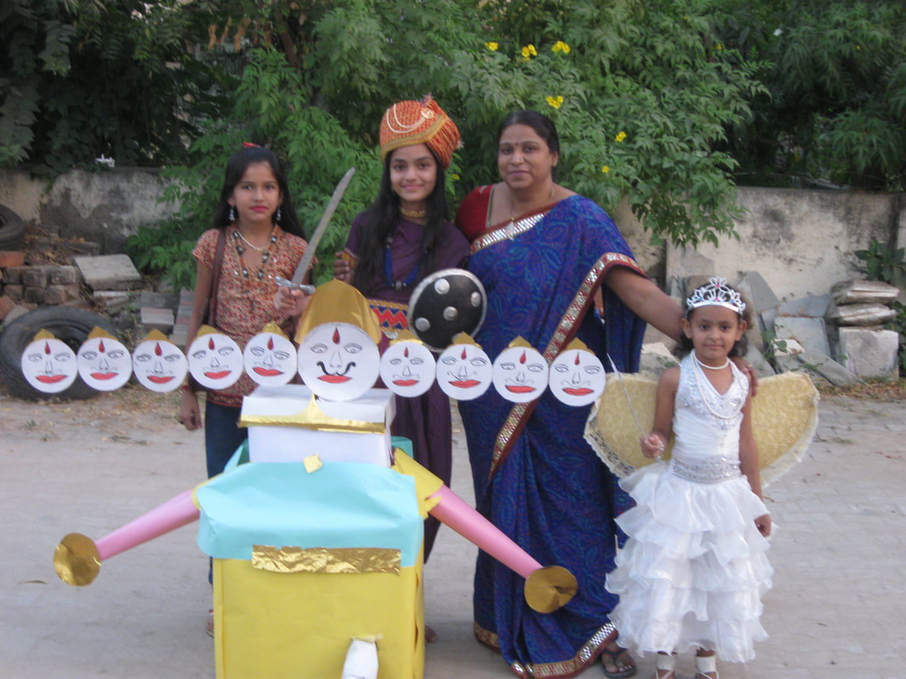 When Celebrated Vijay Dashmi or Dussehra is celebrated on tenth day of Hindu month of Ashwin. Why Celebrated - Significance
How & Where Celebrated सर्व मंगलमांगल्ये शिवे सर्वार्थसाधिके शरण्ये त्र्यंबके गौरी नारायणि नमोस्तुते । The Navratri festival is celebrated to mark victory of Good over Evil. It is associated with the prominent battle that took place between Ma Durga and demon Mahishasur. Ma Durga is worshipped as goddess of Shakti to seek her blessings for prosperity, success, power, longevity, healthy life etc. Special sadhna is done to earn divine powers. Devi Ma is the primordial energy for creation, preservation and destruction. Ma Durga and its all forms are equipped with weapons and worship of “Ma” signifies that in case demonic power rises, weapons should be used to destroy the demons. When Celebrated – Navratri is celebrated mostly twice in a year after harvest seasons in many states:
Scientific significance: Navratri has not only religious importance but also spiritual & other significances. Due to rotation of earth, sun crosses the plane of the earth equator in March & September and changes the directions of sun’s rays falling on earth. This phenomenon brings change in the seasons (summer to autumn and winter to spring). The Navratri festival in Chaitra and Ashwin months coincide with these two junctions of seasons. The change of seasons brings climatic changes and changes in energy levels in the human bodies. Further, the climatic changes increase influx of bacteria and other germs. Fasting, Yogic procedures, observance of discipline for nine days, sadhna, japa etc. purify the body-mind and enhances fighting power of the body against the microbial infections. In addition, the celebrations marked by music, dance and drama etc., during Navratri which elevate the positive energy levels among people. Spiritual significance: Traditional worship practices include installing beautiful statues of Mahishasur Mardani, setting up of Kalash, chanting of bells, blowing of conch, and lighting of lamps for nine days uninterruptedly. Special form of Ma Durga murti and various practices of worship have special significance.
Religious Significance: Nav means nine and ratri means night. Hence, Navratri is traditionally being celebrated in night for nine days all over India marked by worship Ma Durga and her various forms. It is unclear how and in which century the festival began. Devi's epithets synonymous with Durga appear in Upanishadic literature, such as Kali in verse 1.2.4 of the Mundaka Upanishad dated to about the 5th century BCE. Surviving manuscripts from the 14th century provide guidelines for Durga puja, while historical records suggest royalty and wealthy families were sponsoring major Durga Puja public festivities since at least the 16th century. The festivities extend beyond goddess Durga. Various other goddesses such as Saraswati, Lakshmi and gods such as Ganesha, Kartikeya, Shiva and Krishna are regionally revered. In Vasanta Navaratri, Ramayana recital is done for nine days followed by Rama Navami to remember the birth of Rama. In Sharadai Navratri, re-enactment of dance drama on life of Rama, based on Sri Ramcharitramanas is staged for nine days followed by Dussehra, where the effigies of Demon Ravana, Kumbhakarna, and Meghanada are burnt to celebrate the victory of good over evil forces. History: Legend has it that the demon king Mahishasura was granted immortality by Lord Brahma, with the condition being that he could only be defeated by a woman. Mahishasura attacked all the three spheres, Trilok, which includes Earth, Heaven and Hell, and nobody could defeat him. Then Brahma ji, Vishnu ji, Shiva ji and other deities combined their powers to create Goddess Durga. During 15-day long battle between Mahishasura and Goddes Durga, the demon king kept changing his form to confuse the goddess. When, Mahishasura turned into a buffalo, Goddess Durga slayed him with her trishul. It was the day of Mahalaya when Mahishasura was killed. Day-wise worship:
Modes of celebrations in various parts of Bharat: The temples are decorated and illuminated during the period. Special puja, havan, arti and kirtans are done. During Durga puja there are performances of music, dance and plays, making the cultural event. Durga Puja or Durgotsav is celebrated pan India.
When Celebrated
Ganesh or Vinayak Chaturthi celebration starts on the fourth day of Hindu calendar month Bhadrapada (August or September). Why Celebrated - Significance Ganesh Chaturthi is celebrated as birthday of revered Ganesha, the god of wisdom & prosperity. It marks new beginning and remover of obstacles. How & Where Celebrated
Celebrated since when When Celebrated –
Krishna Janamashtmi or Gokulashtmi is celebrated on eighth day of Shravan (July – August) during monsoon. Why Celebrated - Significance Birthday of Shree Krishna is celebrated as Krishna Janamashtmi, who is eighth incarnation of Bhagwan Vishnu. It is believed to be born around 5000 years ago in Mathura. How & Where Celebrated When Celebrated – It is celebrated on full moon day in Hindi month called Phalgun (February March). Why Celebrated - Significance
How & Where Celebrated
Celebrated since when |
Archives
March 2022
Categories |
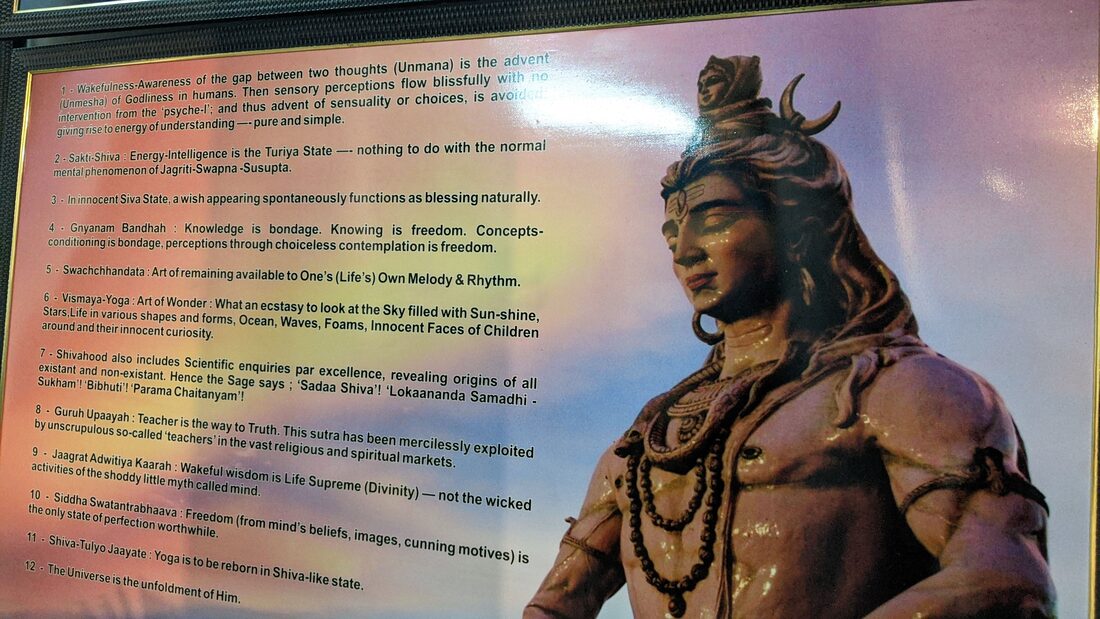
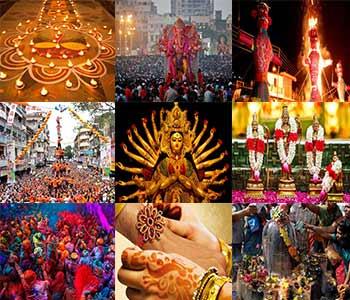
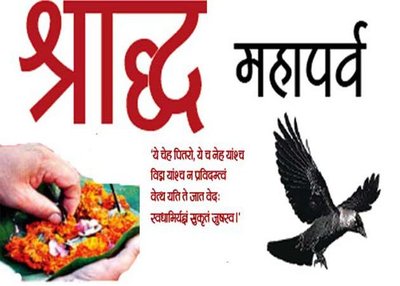
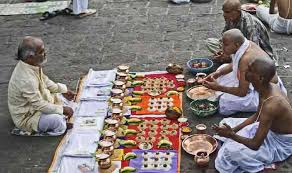
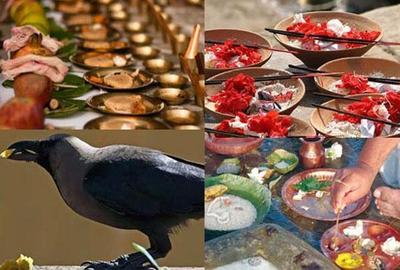
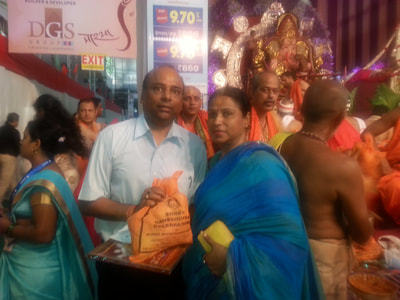
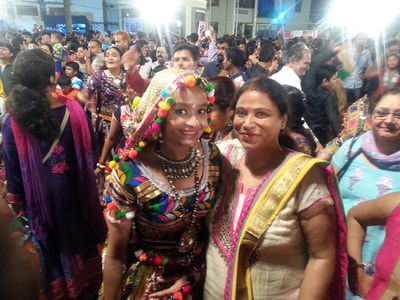
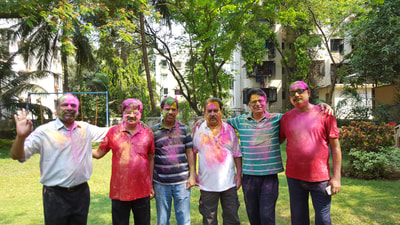
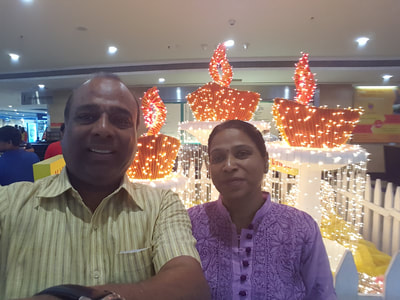
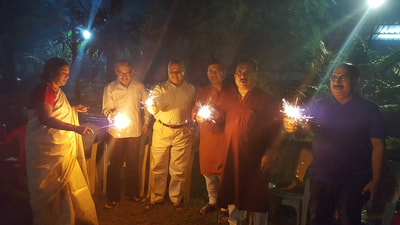
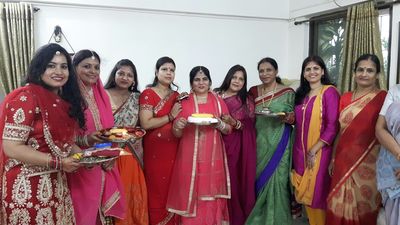

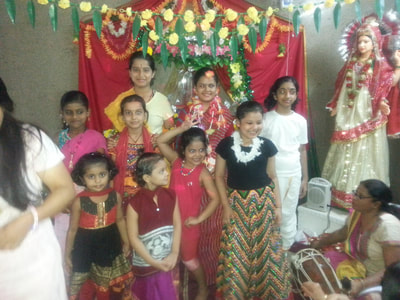
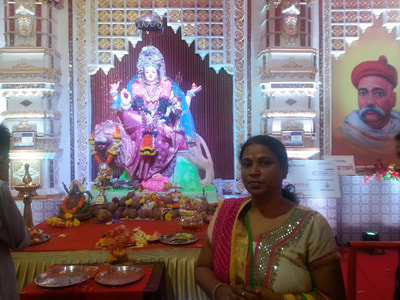
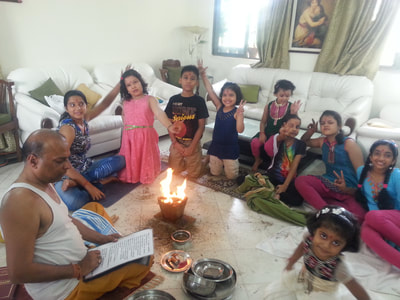
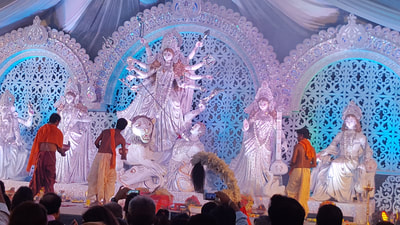
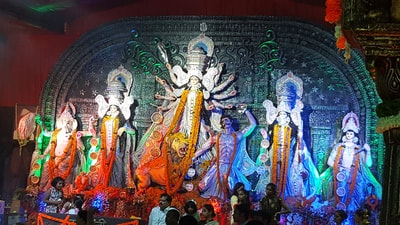
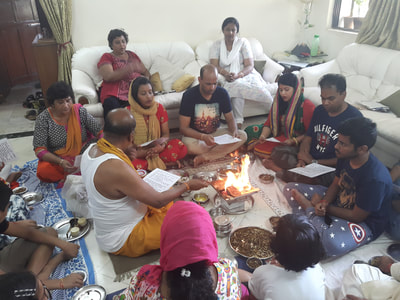
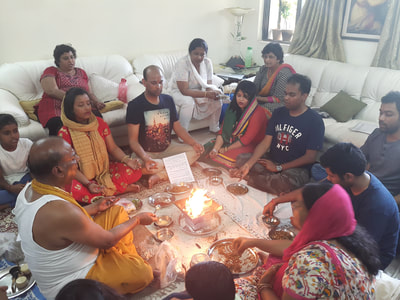
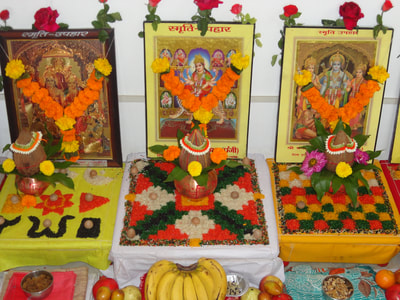
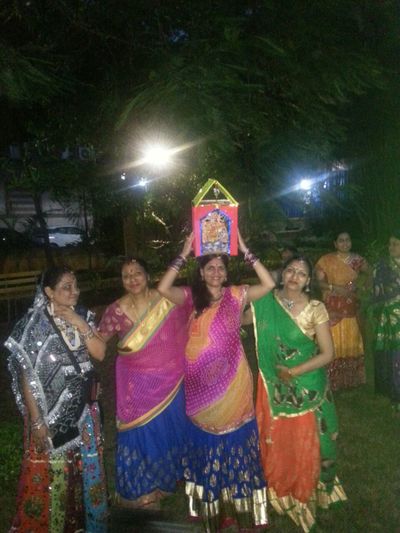
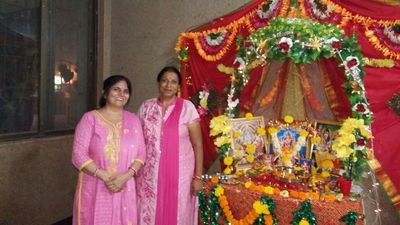
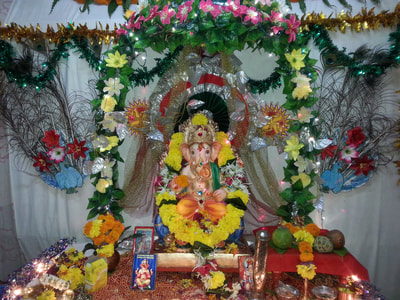
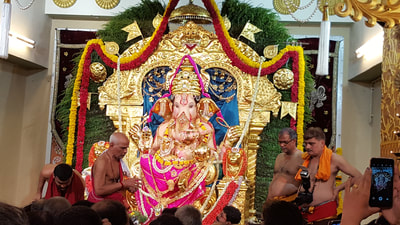
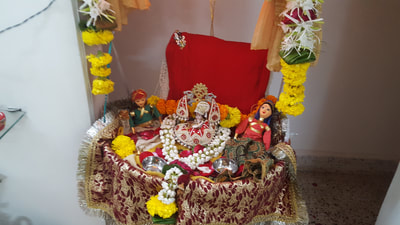
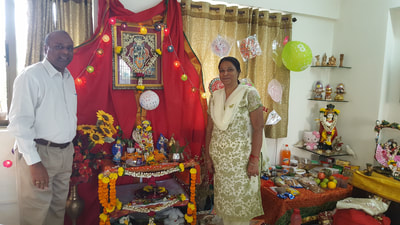



 RSS Feed
RSS Feed